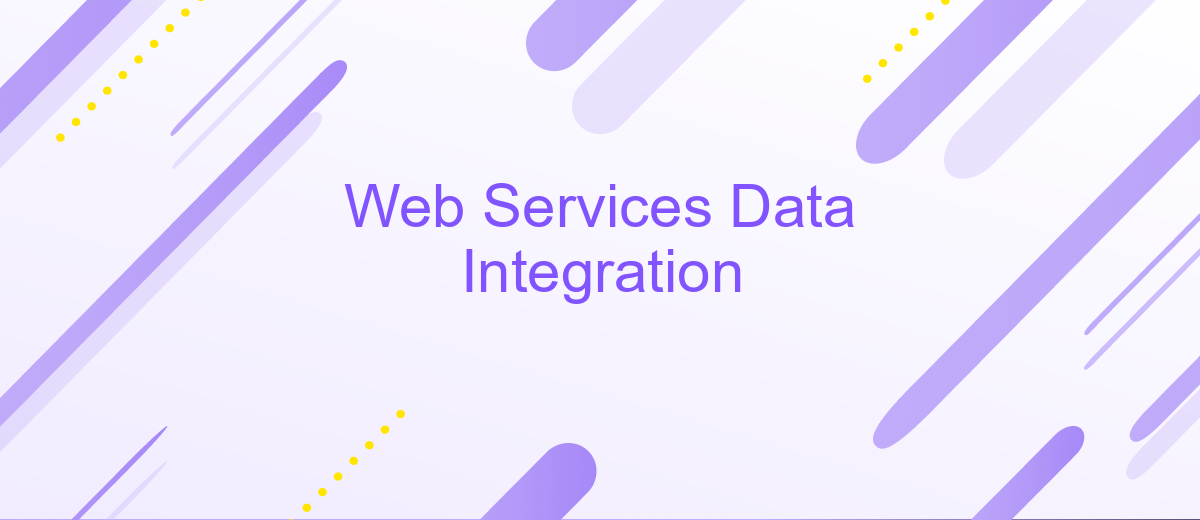Web Services Data Integration
Web Services Data Integration is a critical component in the digital transformation landscape, enabling seamless communication and data exchange between disparate systems. By leveraging standardized protocols and APIs, businesses can enhance interoperability, streamline workflows, and improve data accuracy. This article explores the key concepts, benefits, and best practices for implementing effective web services data integration strategies in today's interconnected world.
Introduction
In today's digital landscape, the ability to seamlessly integrate data across various web services is crucial for businesses aiming to stay competitive. Web Services Data Integration (WSDI) allows disparate systems to communicate and share information, providing a unified view of data. This integration not only enhances operational efficiency but also drives informed decision-making by ensuring data consistency and accuracy.
- Enhances operational efficiency
- Ensures data consistency and accuracy
- Drives informed decision-making
As organizations increasingly adopt cloud-based solutions and microservices architectures, the demand for robust data integration strategies continues to grow. WSDI addresses this need by offering scalable, flexible, and secure methods to connect various applications and data sources. This section will explore the key concepts, benefits, and challenges associated with Web Services Data Integration, providing a comprehensive understanding of its role in modern IT ecosystems.
Benefits of Web Services Data Integration

Web services data integration offers numerous benefits, enhancing the efficiency and effectiveness of business operations. By enabling seamless data exchange between disparate systems, it eliminates the need for manual data entry, reducing errors and saving valuable time. This streamlined process ensures that data is always up-to-date and accessible, fostering better decision-making and improved collaboration across departments. Additionally, web services data integration supports scalability, allowing businesses to easily adapt to growing data volumes and evolving needs without significant infrastructure changes.
One of the key advantages of using web services for data integration is the ability to leverage specialized tools like ApiX-Drive. ApiX-Drive simplifies the integration process by providing a user-friendly platform to connect various applications and automate workflows. This not only accelerates the implementation of integrations but also reduces the technical burden on IT teams. With ApiX-Drive, businesses can quickly set up and manage integrations, ensuring continuous data flow and operational efficiency. As a result, organizations can focus on their core activities, driving innovation and growth.
Implementation Strategies

Effective implementation of web services data integration requires a well-structured approach to ensure seamless data flow and system interoperability. This involves selecting the right strategies that align with the organization's goals and technical capabilities. Below, we outline key strategies to consider for successful integration.
- API-Based Integration: Utilize APIs to enable communication between different systems, ensuring data exchange is both secure and efficient.
- ETL Processes: Implement Extract, Transform, Load (ETL) processes to gather data from various sources, transform it into a usable format, and load it into a data warehouse or other storage solutions.
- Middleware Solutions: Employ middleware to facilitate the interaction between disparate systems, acting as a bridge to ensure data consistency and reliability.
- Data Mapping and Transformation: Use data mapping tools to align data fields across different systems, ensuring accurate data transformation and integration.
By adopting these strategies, organizations can achieve robust web services data integration, leading to improved data accessibility, consistency, and overall system efficiency. Careful planning and execution of these strategies will ensure that data integration efforts meet business needs and technical requirements.
Common Challenges

Integrating data from various web services presents numerous challenges that can complicate the process. One of the primary issues is the heterogeneity of data formats and protocols. Different web services often use diverse data representations and communication standards, making it difficult to achieve seamless integration.
Another significant challenge is ensuring data consistency and reliability. When aggregating data from multiple sources, discrepancies and inconsistencies can arise, leading to inaccurate or incomplete information. Additionally, network latency and service downtimes can affect the timely retrieval of data, further complicating integration efforts.
- Data format and protocol incompatibility
- Maintaining data consistency and reliability
- Handling network latency and service downtimes
- Ensuring data security and privacy
Addressing these challenges requires robust strategies, including the use of middleware solutions, data transformation tools, and stringent data validation mechanisms. By implementing these approaches, organizations can enhance the efficiency and reliability of their web services data integration processes, ensuring that the integrated data is both accurate and useful.
Conclusion
In conclusion, the integration of web services data is a pivotal aspect of modern digital ecosystems, enabling seamless communication and data exchange across diverse platforms. By leveraging robust integration tools and methodologies, organizations can enhance their operational efficiency and drive innovation. The utilization of services like ApiX-Drive simplifies the integration process, offering a user-friendly interface and a wide range of connectors to ensure smooth data flow between applications.
As businesses continue to evolve, the demand for efficient data integration solutions will only grow. It is essential to adopt flexible and scalable integration strategies that can adapt to changing technological landscapes. By investing in reliable integration platforms, companies can unlock new opportunities for growth and maintain a competitive edge in the market. Ultimately, the successful implementation of web services data integration can lead to improved decision-making, streamlined processes, and enhanced overall performance.
FAQ
What is Web Services Data Integration?
Why is Web Services Data Integration important?
What are the common methods used for Web Services Data Integration?
How can I automate data integration tasks?
What challenges might I face during Web Services Data Integration?
Time is the most valuable resource in today's business realities. By eliminating the routine from work processes, you will get more opportunities to implement the most daring plans and ideas. Choose – you can continue to waste time, money and nerves on inefficient solutions, or you can use ApiX-Drive, automating work processes and achieving results with minimal investment of money, effort and human resources.

